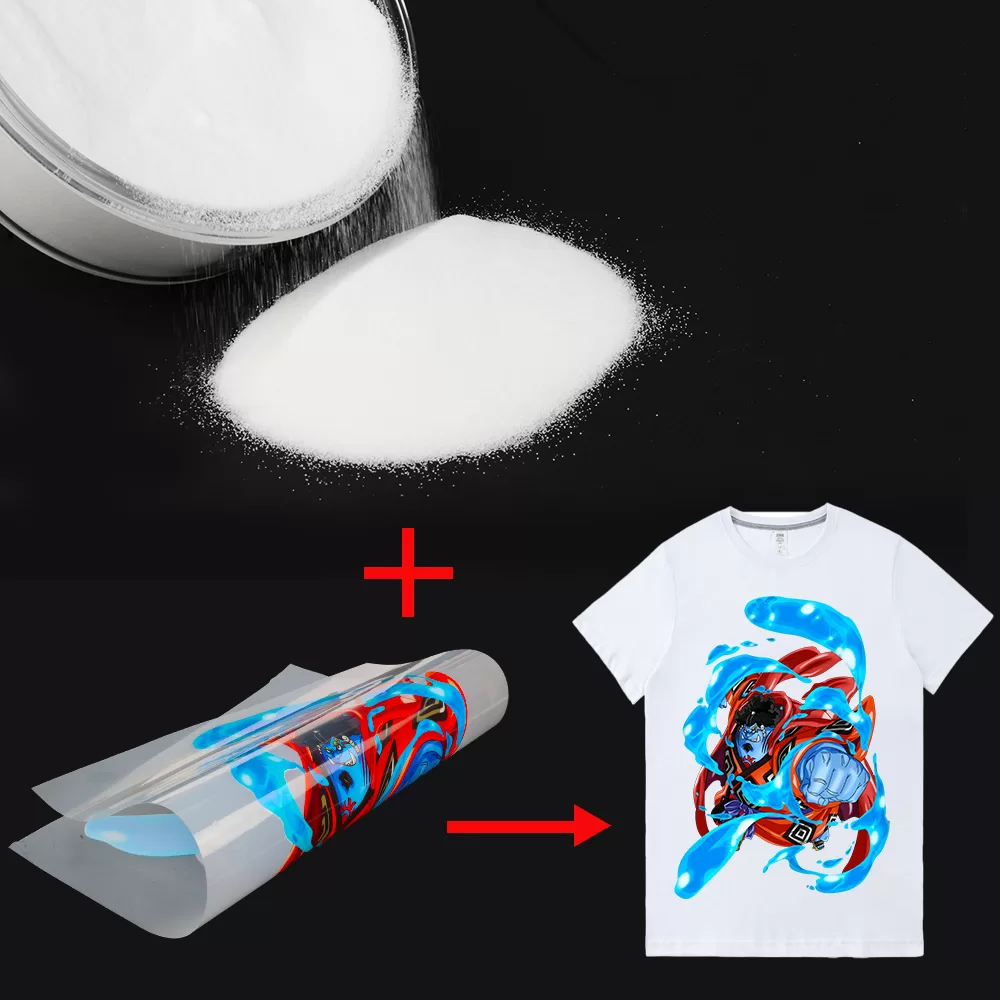In thermal transfer printing, selecting the appropriate hot melt powder is vital for achieving optimal results. With various options available, it's crucial to understand the performance characteristics associated with different types of hot melt powders. This article serves as a guide to help you choose the right hot melt powder for your specific requirements. We will explore key performance factors such as adhesion strength, temperature resistance, and light resistance, and provide practical selection advice based on materials, printing requirements, and budget considerations.
Understanding Performance Characteristics
1. Adhesion Strength
A critical consideration when selecting a hot melt powder is its adhesion strength. Different substrates require specific levels of adhesion for durable prints. Factors such as surface texture, porosity, and coatings influence adhesion performance. Consider the substrate's characteristics and select a hot melt powder that offers the necessary adhesion strength.
2. Temperature Resistance
Temperature resistance is crucial for applications exposed to extreme heat or cold. Evaluate the temperature requirements of your printing application and choose a hot melt powder that can withstand the intended environmental conditions. Consider the melting point and thermal stability of the powder to ensure long-lasting performance.
3. Light Resistance
Printed materials exposed to sunlight or UV radiation require good light resistance to prevent fading or discoloration. When selecting a hot melt powder, consider factors such as pigments, additives, and substrate type that contribute to light resistance. Opt for powders that offer excellent light stability for enhanced durability.

Matching Hot Melt Powders to Materials and Printing Requirements
1. Substrate Compatibility
Different substrates have specific requirements for optimal printing results. Consider the surface characteristics, flexibility, and porosity of the substrate when choosing a hot melt powder. For textiles, select a powder that provides strong adhesion and flexibility, while for plastics or paper, choose a powder that bonds effectively to those materials.
2. Ink Compatibility
Ensure compatibility between the hot melt powder and the ink used in your printing process. Consider ink chemistry, drying characteristics, and compatibility with the hot melt powder to ensure proper adhesion and color stability. Consult with suppliers or conduct compatibility tests to ensure a seamless combination of ink and powder.
3. Printing Speed and Production Efficiency
Printing speed and production efficiency are essential factors in many industries. Selecting a hot melt powder that offers fast melting and solidification times can significantly enhance productivity. Look for powders designed for high-speed printing to achieve efficient production without compromising quality.
Budget Considerations and Testing
1. Cost-Effectiveness:
Budget considerations play a significant role in hot melt powder selection. Evaluate the cost-effectiveness by considering factors such as powder consumption, waste reduction, and overall print quality. Balancing performance requirements with cost considerations will help you make an informed decision that aligns with your budget.
2. Testing and Evaluation:
Before making a final decision, conduct small-scale trials to test different hot melt powders. Analyze print quality, adhesion strength, and durability of the prints to ensure the selected powder meets your specific requirements. Testing and evaluation enable fine-tuning and ensure the chosen powder delivers the desired results.
Conclusion:
Choosing the right hot melt powder is essential for achieving high-quality and durable prints in thermal transfer printing. Consider the performance characteristics such as adhesion strength, temperature resistance, and light resistance to meet your specific requirements. Evaluate substrate compatibility, ink compatibility, printing speed, and production efficiency to ensure efficient and cost-effective printing processes. By conducting thorough testing and evaluation, you can confidently select the hot melt powder that best suits your needs, resulting in excellent print outcomes.

